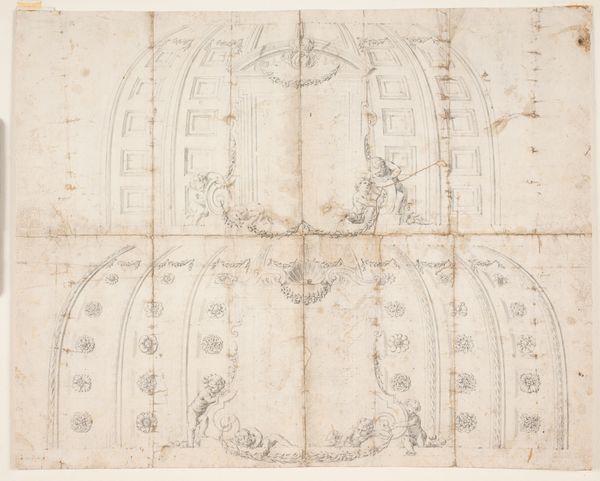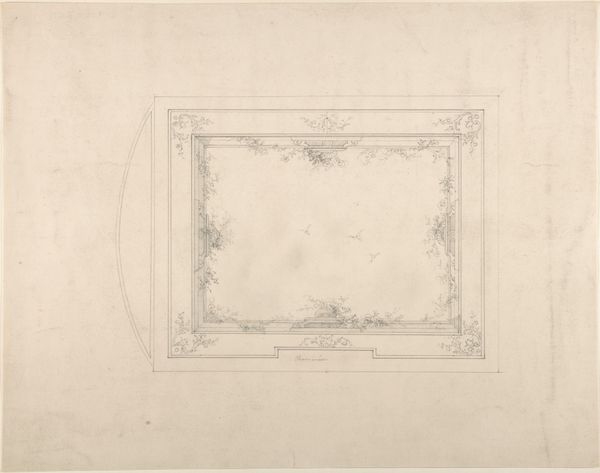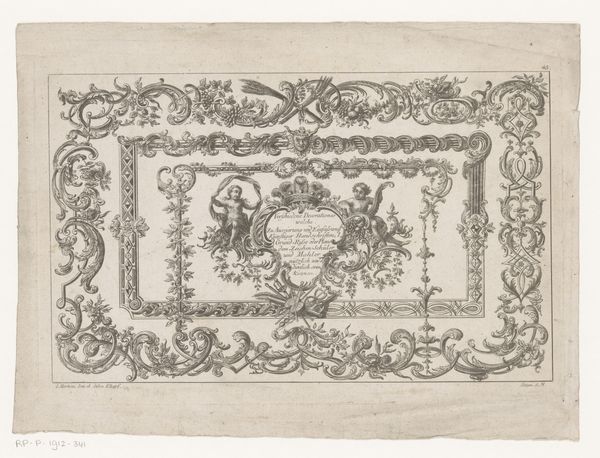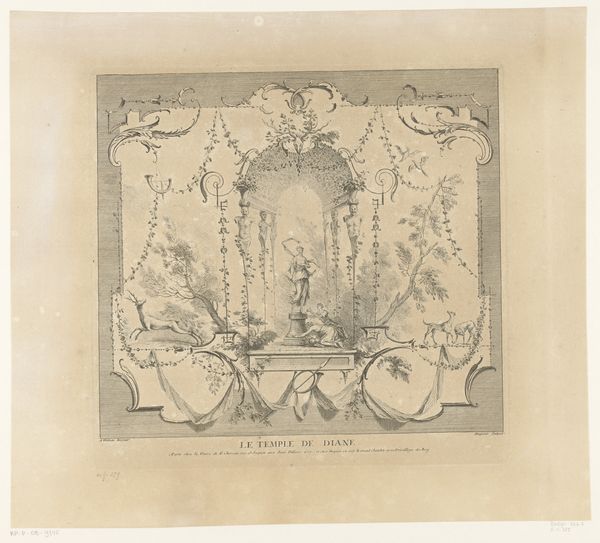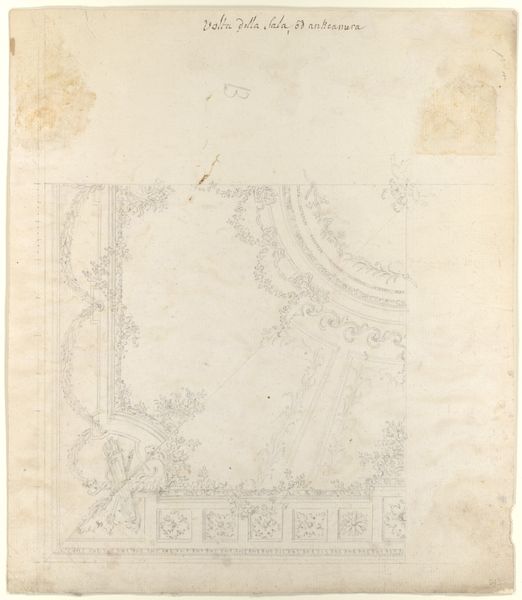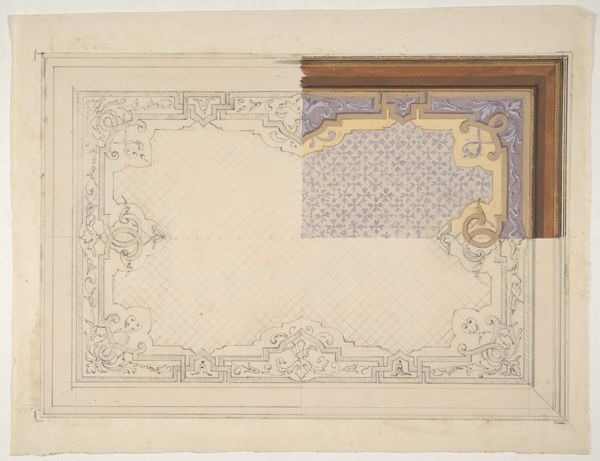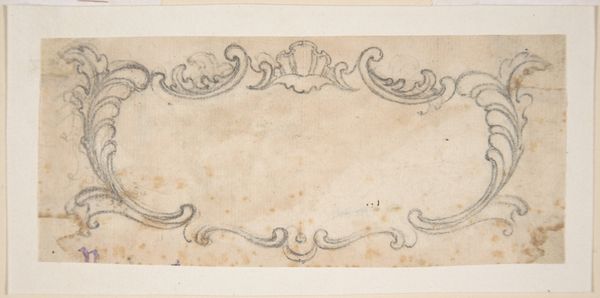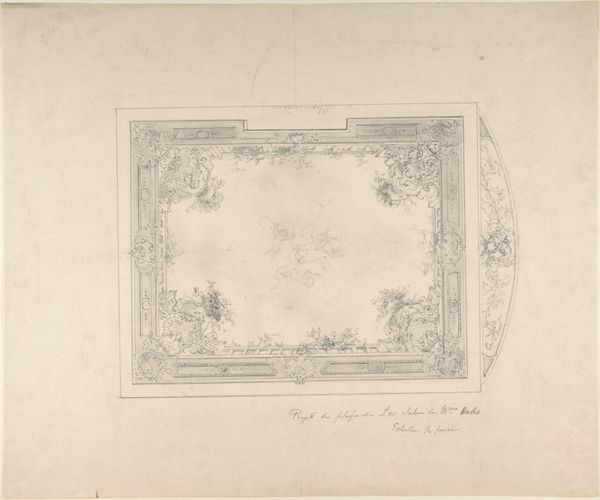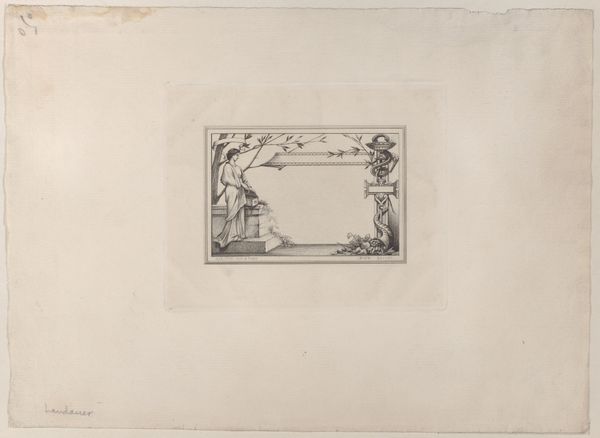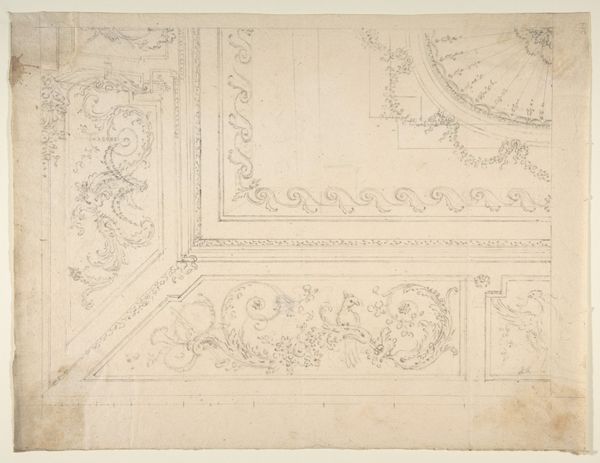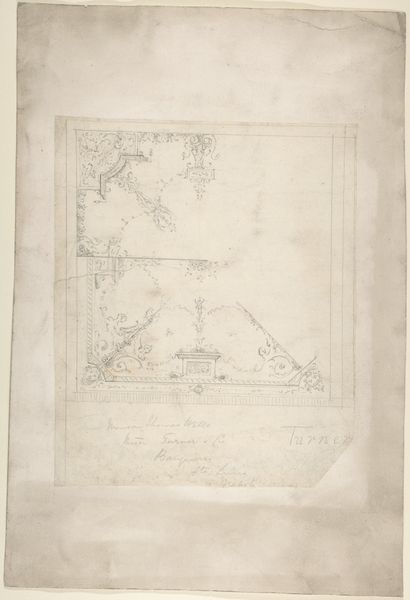
Design for a panel painted with a pastoral scene and rococco motifs 1830 - 1897
Copyright: Public Domain
Curator: The Met is home to this preparatory sketch, entitled "Design for a panel painted with a pastoral scene and rococco motifs," by Jules-Edmond-Charles Lachaise. Its creation is dated between 1830 and 1897, rendered in pencil on paper. Editor: It gives off such a light, frivolous air. Even the sketchiness feels like a conscious choice, an embrace of the carefree nature suggested by the figures within the pastoral scene. What stories might lie hidden beneath that frothy rococo surface, I wonder? Curator: That’s a keen observation. This piece embodies the tension inherent in the rococo style. Ostensibly, it’s decorative, lighthearted—a scene of leisure and idyllic pleasure. However, the socio-political context suggests deeper currents. Aristocratic excess and decadence became increasingly disconnected from the realities faced by the populace. Art like this, even in its intentions for mere ornamentation, became a silent battleground, reflecting class tensions of the time. Editor: You're right, the scene depicted does carry significant symbolism. We have these classically rendered figures lounging about, almost like nymphs in their garden. It echoes a longing for some prelapsarian Eden, of harmony with nature before industrialization and the associated social upheaval. It also brings into focus gender and class dynamics—who gets to be a reclining figure, who must toil? It really invites reflection about idealized concepts of beauty and freedom versus their lived reality for most. Curator: Precisely! We're talking about the projection of a lifestyle divorced from the lives and labor that actually supported it. Even the rococo style itself, with its ornate details, became coded. It's not just a scene—it’s a visual encoding of privilege. The landscape, with its supposed naturalness, serves to naturalize social hierarchies and gender expectations. Who is present, who is excluded, what does their activity signal in connection to who they are. Editor: Thanks to you, it is impossible to ignore all those dynamics inherent in what seemed on the surface a sweet tableau. It's a beautiful example of how symbols continue evolving, gaining ever richer layers of contextual association across history. Curator: And an excellent example of the power of context. It's never "just" a design, "just" a landscape, is it? It’s about the narrative, the silent politics that saturate the composition.
Comments
No comments
Be the first to comment and join the conversation on the ultimate creative platform.
